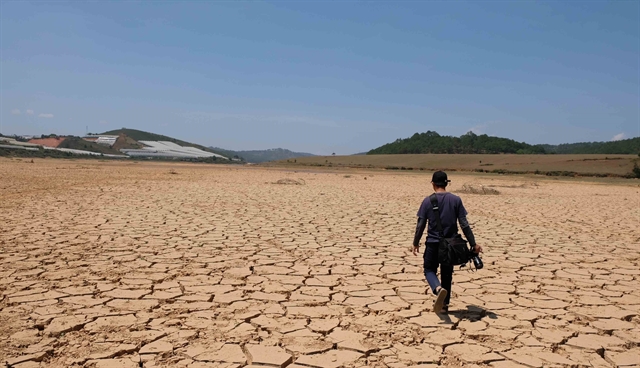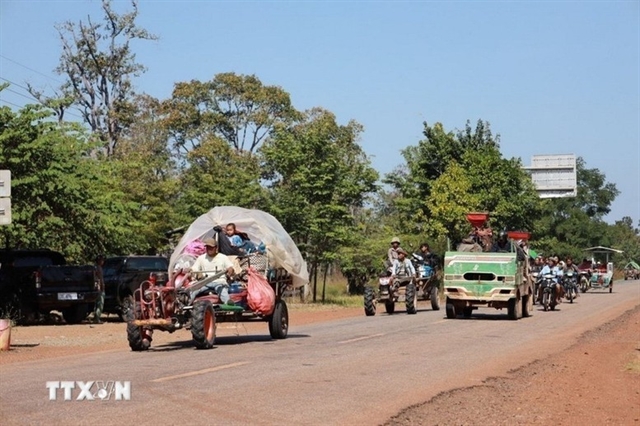 Society
Society

Nguyễn Văn Tuấn has been farming around Dankia Lake in Lạc Dương District, Lâm Đồng Province for 10 years but he has never seen the lake as dry as now.

|
| People can walk or ride motorbikes on the bottom of Dankia Lake which has dried up in the recent years. — VNA/VNS Photo Nguyễn Dũng |
LÂM ĐỒNG — Nguyễn Văn Tuấn has been farming around Dankia Lake in Lạc Dương District, Lâm Đồng Province for 10 years but he has never seen the lake as dry as now.
He said the lake, which supplies water for domestic use and irrigation for the Central Highlands city of Đà Lạt and Lạc Dương District, started to dry up in the last three to four years.
Created in 1945, the reservoir serves as the upper stream of the Đồng Nai River that runs through many southern localities
Almost half of the reservoir in the upper part, where the Golden Stream, which is connected with the Đồng Nai River, flows from Langbiang Mountain, has run dry.
“The lake’s size has been narrowed, some parts have become small streams. I have to use underground water to water my rose garden because water taken from the lake is mixed with mud and soil,” Tuấn said.
Dankia Lake and the Golden Stream have an area of about 13,000ha with an average depth of 6m. The current water level has decreased by almost 2m compared to previous years. The original designed water storage capacity was 20 million cu.m but it has reduced to only about 10 million cu.m.
According to the Southern Institute of Water Resources, Dankia Lake has not undergone any major repairs since it was constructed.
The project has been damaged and seriously degraded. Sediment continues to be deposited on the reservoir bed, decreasing the capacity of the lake.
Dr Lâm Ngọc Tuấn, former head of the Environment Faculty, Đà Lạt University, said the reservoir's volume has been narrowed due to sedimentation and decreasing water supply from upstream. A large amount of water is pumped from the lake for irrigation, making the water level in the lake quickly dry up in the dry season.
The expanded area of high-tech greenhouses in Lâm Đồng has increased the risk of soil erosion and as a consequence, eroded soil can not hold water, the expert said.
Many farmers have added soil to raise the height of their garden floors to avoid floods, making the lake bed face rapid sediment deposits after each rainy season, he said.
A plan to increase the capacity for Dankia Lake was proposed by the provincial Department of Agriculture and Rural Development in 2019 including solutions like upgrading the dyke and dredging the lake. However, the plan seems to be not feasible due to a lack of funding.
Phạm Trung Dũng, deputy director of Lâm Đồng Irrigation Investment and Exploitation Centre, said with the current situation, the dredging plan is the fastest solution to increase the capacity of Dankia Lake. However, in the long term, there needs to be a plan to curb the expansion of agricultural production in the lake’s upstream area, especially greenhouses and net houses.
To stabilise the reservoir’s volume, Tuấn suggested changing land use planning and restoring the natural forest. He also called for increasing the volume of the reservoir by dredging or raising the height of the dam and changing cultivation methods instead of using net houses and greenhouses. — VNS




